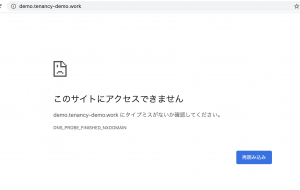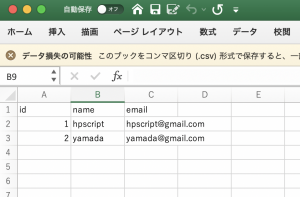fqdnとは”Fully Qualified Domain Name”の略
トップレベルドメイン(TLD)までのすべてのラベルを含むドメイン名
routes/tenants.php
use Illuminate\Support\Facades\Route;
Route::get('/', function(){
return view('tenants.home');
});
resources/views/tenants/home.php
<!DOCTYPE html> <html lang="en"> <head> <meta charset="UTF-8"> <meta name="viewport" content="width=device-width, initial-scale=1.0"> <title>Document</title> </head> <body> <h1>Welcom!</h1> <p>This will be your <b>dashboard</b> for every tenant in your system.</p> </body> </html>
config/tenancy.php
L make sure that path would be right.
'routes' => [
'path' => base_path('routes/tenants.php'),
'replace-global' => false,
],
### creating first tenant
$ php artisan make:command tenant/create
app/Console/Commands/tenant/create.php
namespace App\Console\Commands\tenant;
use Illuminate\Console\Command;
use Illuminate\Support\Str;
use Hyn\Tenancy\Models\Hostname;
use Hyn\Tenancy\Models\Website;
use Hyn\Tenancy\Repositories\HostnameRepository;
use Hyn\Tenancy\Repositories\WebsiteRepository;
class create extends Command
{
/**
* The name and signature of the console command.
*
* @var string
*/
// protected $signature = 'command:name';
protected $signature = 'tenant:create {fqdn}';
/**
* The console command description.
*
* @var string
*/
protected $description = 'Given a unique tenant name, creates a new tenant in the sytem';
/**
* Create a new command instance.
*
* @return void
*/
public function __construct()
{
parent::__construct();
}
/**
* Execute the console command.
*
* @return int
*/
public function handle()
{
$fqdn = sprintf('$s.$s', $this->argument('fqdn'), env('APP_DOMAIN'));
$website = new Website;
$website->uuid = env('TENANT_WEBSITE_PREFIX') . Str::random(6);
app(WebsiteRepository::class)->create($website);
$hostname = new Hostname;
$hostname->fqdn = $fqdn;
$hostname = app(HostnameRepository::class)->create($hostname);
app(HostnameRepository::class)->attach($hostname, $website);
// return 0;
}
}
.env
TENANT_WEBSITE_PREFIX=tenancy_demo_
php artisan tenant:create demo
mysql> show tables;
+————————+
| Tables_in_tenancy_demo |
+————————+
| failed_jobs |
| hostnames |
| migrations |
| password_resets |
| users |
| websites |
+————————+
6 rows in set (0.31 sec)
mysql> select * from websites;
+—-+———————+———————+———————+————+——————————–+
| id | uuid | created_at | updated_at | deleted_at | managed_by_database_connection |
+—-+———————+———————+———————+————+——————————–+
| 1 | tenancy_demo_NcmmUL | 2021-08-08 04:39:43 | 2021-08-08 04:39:43 | NULL | NULL |
| 2 | tenancy_demo_IbSPrJ | 2021-08-08 04:47:13 | 2021-08-08 04:47:13 | NULL | NULL |
+—-+———————+———————+———————+————+——————————–+
2 rows in set (0.37 sec)

conf.dの名前解決がうまくいっていないような印象。
あれ? マルチテナントの場合、サブドメインの設定ってするんだっけ?

